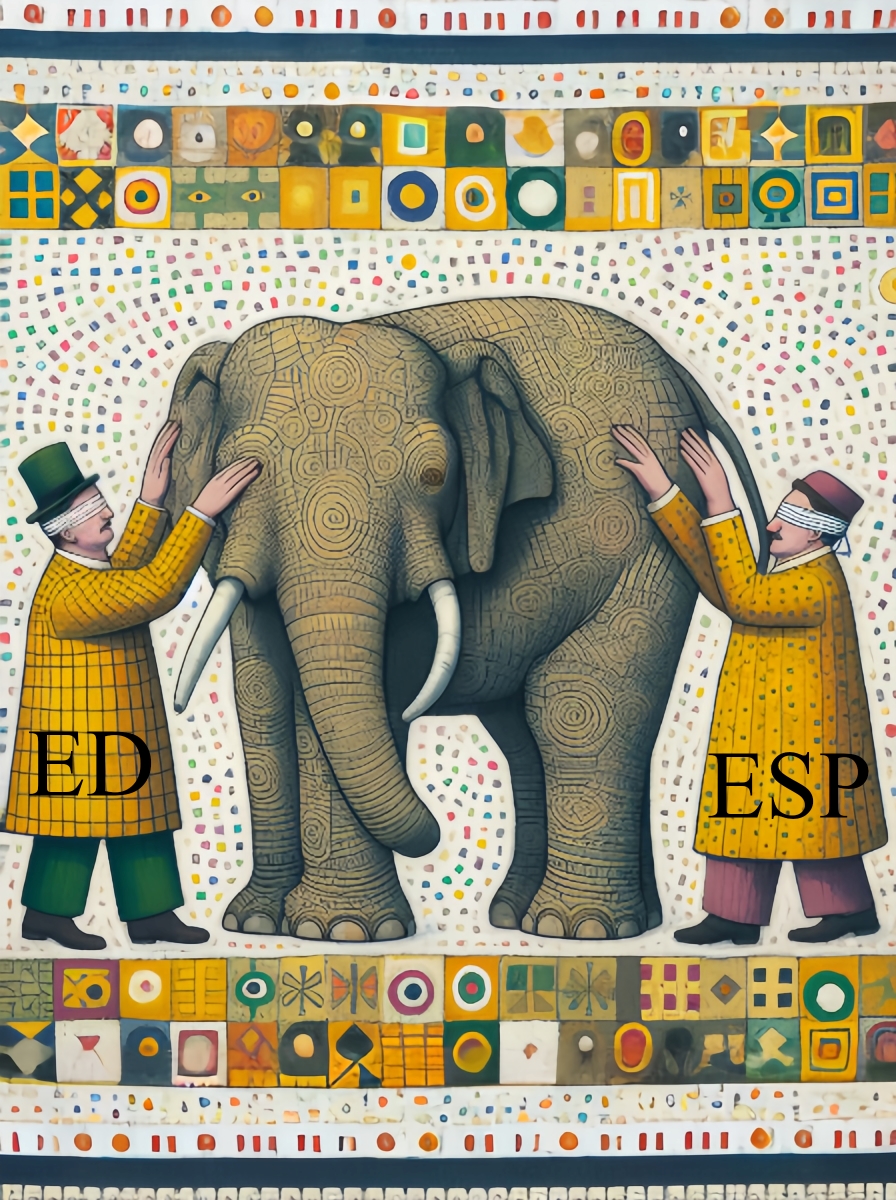Exploring the atomic world. What you find depends on how you look
A new publication in Structure by Dr. Matthias Bochtler of the International Institute of Molecular and Cell Biology in Warsaw compares the images (maps) of biomolecules that can be obtained using X-rays, electrons, or neutrons as probes of atomic matter. The comparison reveals that these images differ, not only between neutrons and the other probes, but also between X-rays and electrons as the probe.
Pushing the boundaries of vision has been a fascination for centuries. In 1610 Galileo's telescope expanded the distances we could see, and today, the Webb telescope provides images from the farthest reaches of the universe. At the other end of the length scale, Leeuwenhoek's microscope revealed a world much smaller than what the human eye can perceive. Modern super-resolution techniques now make it possible to detect individual molecules in complex samples, all in visible light.
With our naked eye, we can only see the visible light spectrum, stretching from "red" to "blue". In the 20th century, the concept of "vision" was extended to exploit parts of the electromagnetic spectrum completely invisible to humans. Extending vision far beyond the "red" that our eyes can see, nuclear magnetic resonance (NMR) uses radio waves to probe molecular structure. Far beyond the "blue" that our eyes can see, we use X-ray crystallography to probe molecular structures. Our toolkit for "seeing" has also grown with the use of electrons and neutrons as imaging probes instead of light. With all these probes, it is now possible to produce atomic resolution images of matter. For electrons as probes, reaching atomic resolution is a fairly new development that has been dubbed the "resolution revolution". Surprisingly, however, it was not entirely clear what exactly one "should" see with electrons at high resolution, even for already "known" structures.
The Eye of the Beholder
In his work, Dr. Bochtler has investigated how atomic resolution maps differ depending on the nature of the probe used to determine them. His intellectual journey was sparked by the first true atomic resolution maps obtained through cryo-electron microscopy (cryo-EM) by researchers Holger Stark and Ashwin Chari, which revealed unexpected features.
"During the quiet solitude of the COVID lockdowns, I delved into the historical quantum physics papers of the early 20th century, which led to new insights on modern atomic maps," the researcher shares. "Electron density (ED) maps measured using X-rays as the probe, and electrostatic potential (ESP) maps measured using electrons as the probe, are widely regarded as equivalent except for experimental errors. Our findings show that this is not entirely the case," explains Dr. Bochtler. Using advanced theoretical models like density functional theory (DFT) and the Bethe-Mott relation, he has demonstrated that ED and ESP maps differ significantly in their depiction of atoms, particularly in how they display the charges within atoms. He has also shown that the relative contributions from lighter and heavier atoms, the sensitivity to chemical bonding in outer atomic shells, and the sensitivity to charge, all depend on the type of probe.
A Leap in Atomic Imaging
The research in Structure not only adds to the theoretical foundations of atomic imaging but also enhances our ability to use cryo-EM for practical applications, such as in medicinal chemistry. The study reveals that X-rays, electrons and neutrons are each tuned to different aspects of matter, and thus they do not all provide the same information. X-rays detect electron density, while electrons used in cryo-EM sense the electrostatic potential, and neutrons are sensitive to nuclear coherent scattering length (NCSL). "The resolution revolution in cryo-EM offers exciting opportunities. To take maximal advantage of it, we should fully understand what the maps actually show”, Dr. Matthias Bochtler from Warsaw’s IIMCB states.
It is worth noting that Dr. Bochtler’s innovative study published in Structure, provides a perfect example of how biological sciences are an integral part of STEM (Science, Technology, Engineering, and Mathematics), intertwined in the common quest to understanding the foundations of the world we live in.
The publication in Structure by Matthias Bochtler, entitled “X-rays, electrons, and neutrons as probes of atomic matter” is available here: https://www.sciencedirect.com/science/article/abs/pii/S096921262400039X

The problem described in Prof. Bochtler's research could be best illustrated by the old Indian allegory of the elephant and blindfolded observers. Every observer can only examine a fragment of the animal, and thus he has no capacity to grasp the whole complexity of the examined object. ED and ESP symbolize available methods in imaging, each probing different aspects of matter. In order to "see the entire elephant" we need a combination of techniques, and a thorough knowledge about the mode in which they probe the matter
About the author:
Prof. Matthias Bochtler is a structural biologist and professor of biological sciences. He leads the Laboratory of Structural Biology at the International Institute of Molecular and Cell Biology in Warsaw and the Genome Engineering Laboratory at the Institute of Biochemistry and Biophysics of the Polish Academy of Sciences. He graduated from the Technical University of Munich. He was a postdoctoral fellow at the Max Planck Institute of Biochemistry (MPIB) in Martinsried. He moved to Poland to establish a joint research group between the Max Planck Institute of Molecular Cell Biology and Genetics in Dresden and the IIMCB in Warsaw. He is a laureate of the Minister of Education and Science Award for significant achievements in scientific activities (2023), the Prof. Włodzimierz Krzyżosiak Distinction awarded by the Polish Academy of Sciences (2023), the Prof. Stefan Pieńkowski Award (2005), and the EMBO/HHMI Young Researcher Award (2004).
